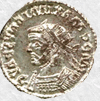 |
 |
Once the significance and the magnitude of the site were confirmed, at the beginning of December 1.991, the works started again with a new intensive campaign of excavation, with a team of more than 100 people, lasting until May 1.992. The preestablished space for this phase covered all the “playa de vías” of the railwaystation , meaning a corridor 700 meters long and 80 meters wide, in which the new station was to be situated. This sector had been seriously affected by the initial underground works, during which the excavation was extended to two-to-three meters beneath the original floor level. This influenced the archaeological information.
Coinciding with the conclusion of these works the public administrations that participated in the construction of the railroad ordered that work begin again , preserving only three parts of the Roman palace that was found : half of the criptoporticus situated on the “playa de vias” , the triconch hall found between the station and a nearby street (Avenida de América), and a cistern located in the East wing. These were partially extracted and stored in municipal rooms in block form.
In December 1.992, once the works of the new railroad station were begun, it was possible to restart the archaeological works, since concentrated in the parts of the archaeological site that were preserved after the construction of the new station.
A little later, between June and November 1.993, we developed one of the most productive campaigns of the excavation in Cercadilla, whose purpose was to prove the “restitution hypothesis” that until that moment we had only outlined following as a criteria the reconstruction by symmetry. Another result of these works was the discovery and excavation of the majority of the thermal enclosure of the palace, located immediately to the North of the main central hall that presides over the architectural organisation of the palatine complex.
A new archaeological excavation campaign was undertaken between the months of June and September 1.994, in the area that we interpreted as the residential zone of the palace.
Between the Spring and the Summer of 1.995, another campaign took place, in this case in the South wing of the palace, where it has been possible to fence off an area of 500 square meters, in which the investigation will continue in the future.
Finally, in 1.996, the archaeological
investigation was limited to a small section, to consolidate concrete section
of the criptoporticus.
 |
 |
